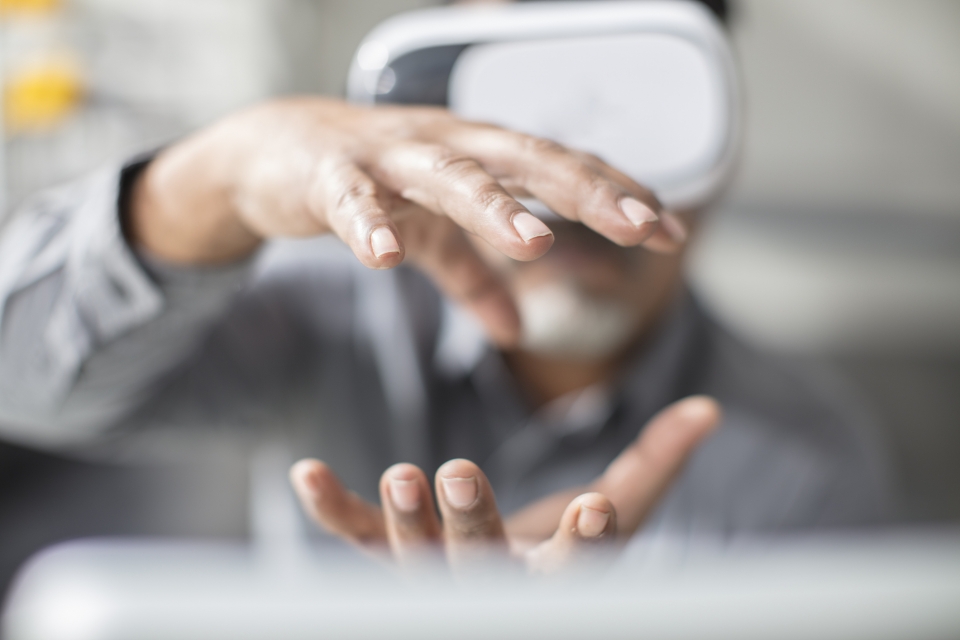Last week I was fortunate enough to attend day one of Semi-Permanent – The Future of the Future. I do like going to these things and often walk away inspired by an idea or two. Mostly I find design events are about the design community showing off how clever they are while trying to convince their peers that we make the world a better place. This time though, it was actually about design saving the world.

The day started with Ivy Ross, head of hardware design at Google. She opened with “Designers are problem-solvers” which was always going to appeal to me. My philosophy is design isn’t what we do but how we do it. What we do is help our clients address the challenges and opportunities facing their businesses, and their audiences. Ivy then went on to talk about how Google’s hardware was designed to address the deep human needs that only a latecomer to the device market can fully appreciate. Who needs another black plastic box she said – and I agree. Everything about the design was thoughtful and human, led by natural shapes, textures and colours that drive feelings. Better still, it was made with innovative, environmentally friendly, natural materials.
And then there was Google’s A Space for Being exhibition at Milan Design Week. Wow! I’ve always known design is about how it makes you feel but now we know that your body physically reacts to it as well. Design can help with stress, anxiety and happiness. Lesson learnt: surround yourself with stuff that makes you feel good.
“I’ve always known design is about how it makes you feel but now we know that your body physically reacts to it as well”
The Kickstarter guy – Charles Adler– was interesting in showing the pace of change and illustrating the idea of technology bringing us closer together. The outtake: with so much rapid change, the rules are always temporary, just waiting for someone to break them.
“The rules are always temporary, just waiting for someone to break them”
Bruce Mau from Massive Change Network blew my mind. After all, he’s redesigning the holy city of Mecca and making beautiful furniture from Coke bottles. He talked about the rapid pace of change and the problems we humans have created. He felt, as designers, we have a responsibility to redesign everything to find answers to the biggest challenges we face as a race. He invited us to ‘imagineer’ in order to create solutions that last, solutions that deliver to the needs of a world double the current population and to deliver open systems solutions that could adapt and evolve in a world of rapid change. He cited nature and indigenous cultures as sources of inspiration who’ve mastered this thinking. So next time, you’re redesigning Mecca think about solutions that could still be relevant in a thousand years not just the next 20!
“Think about solutions that could still be relevant in a thousand years not just the next 20!”
Ana Arriola from Microsoft leads their AI capability. I was expecting a sci-fi talk about advances in technology and what the robots will do in the years to come. Instead we got a very human-led talk about the biases we as humans have and how we are in danger of introducing these into a discriminating AI world. She delivered strong message about inclusivity, ubiety and asking why and not just how. You come to these events to have your mind expanded and your perceptions challenged – Ana did just that.
“We are in danger of introducing human biases into a discriminating AI world”
We finished up with Carla Hjort from Space10, Ikea’s innovation lab. I always worry when speakers kick off with Nietzche and the meaning of existence but Carla’s story also featured LSD, numerous dance festivals, a cult in India and a catchy-tune about ‘feeding the horse’. The outtake for me was that she thinks differently about Ikea and their contribution to the world because she’s experienced the world in such a different way. Ikea’s change is driven by a clarity of purpose and a big and long-term perspective. Carla, too, advocated a licence to rethink everything and, like our kickstarter guy, taking a rebellious approach.
My takeaways
So what do I take back to the office from this? Firstly, I was struck that the bad guys – Microsoft, Coke, Google, etc – are potentially also the good guys in disguise. On a more personal level: know your purpose, have principles, think bigger and bolder, think longer-term, challenge convention and always use our design superpower for good. The world’s got big problems – environmental, scarcity of resources, the pressure of time and change, inclusiveness and many more. Everything we do every day should be part of a bigger solution, or at the very least not add to the problem. Ivy said it best “As people trained to design solutions, it would be remiss of us not to help solve the biggest problems facing our planet.”
Insight is going to need to add a ‘Saving the World from itself’ work stream to our project taxonomy.

